- Skip to main content
- Skip to primary sidebar
Pre-order my book and get a free bonus! LEARN MORE
The Measured Mom
Education resources for parents and teachers
PS PK K 1 2 3 3 Comments

How to use repeated reading to improve fluency
This post contains affiliate links. As an Amazon Associate I earn from qualifying purchases.
Sharing is caring!
- Pinterest 2
In this final post in our fluency series, we look at how to use the research-backed practice of repeated reading!

Repeated reading is reading the same text multiple times until a certain (or better) level of fluency is reached.
We’ve known since the 1970’s that repeated reading improves fluency. It helps readers achieve automaticity – so that they can decode without thinking about decoding (Shanahan, 2017).
in 1979, J. Samuels (one of the big names when it comes to fluency research) asked students with learning difficulties to read a short passage orally several times. With each reading, students had greater accuracy, speed and comprehension.
But here’s the best part: as students were given other passages of equal or greater difficulty, their first readings of these passages were better than their first reading of the initial passage (Rasinski, 2010).
In other words … the gains from repeatedly reading one text transferred to other texts!
Benefits of repeated reading
Repeated reading isn’t just for students who struggle. Rasinski (2010) shares these benefits:
- Repeated reading improves comprehension – and this improvement in comprehension extends to unpracticed passages as well!
- Repeated reading leads to greater word recognition accuracy.
- Repeated reading usually leads to better reading performance.
- When students are given real reasons for repeated reading (such as an upcoming performance), they are often more than willing to practice.
Tips for doing repeated reading with the whole class
- Choose a text of an appropriate length (50-200 words depending on student ability).
- Choose the appropriate level of text. To be honest – experts disagree about this. Shanahan (2017) suggests text at students’ frustration levels; otherwise, there won’t be much improvement with successive readings. Others think the text should closer to students’ independent level. If you choose a frustration level text, you must be there to give appropriate support.
- If students are not doing repeated reading for a performance, up to 4 reads is enough on a single text. Research has not shown fluency gains after that number of readings.
Types of repeated reading
- Students can read along with an audio recording of a text until they can read the text independently (note that I said read along , not just listen; simply listening won’t improve fluency).
- Partner reading – students can reader a partner play multiple times ( check out this blog post for partner reading tips ).
- Each day, reread poetry using the format of the Fluency Development Lesson – this blog post lays it all out.
- Do Reader’s Theater – in which students take turns reading parts of a script and perform it at the end of the week; this is a really good article about how to implement reader’s theater as an approach to classroom fluency instruction .
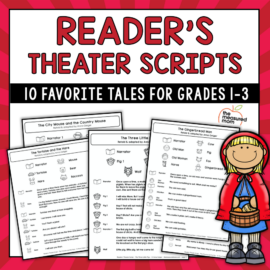
Reader’s Theater Scripts – Familiar Tales for Grades 1-3
$ 12.00
These scripts include parts with varying levels of difficulty. Kids love these clever twists on familiar tales!
Pre-order my new book and get a FREE bonus!
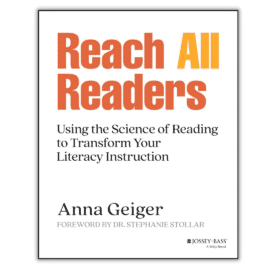
You’ll love this reader-friendly guide to the science of reading! Learn how to put the research into action so you can reach ALL readers. Pre-order before July 23 and get my Science of Reading Mini-Course – FREE!
Be sure to read the rest of the posts in our fluency series!
Part 1 Part 2 Part 3 Part 4
Rasinski, T. (2010). The fluent reader . Scholastic.
Shanahan, T. (2017, August 4). Everything you wanted to know about repeated reading. Reading Rockets. https://www.readingrockets.org/blogs/shanahan-literacy/everything-you-wanted-know-about-repeated-reading
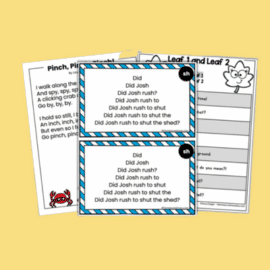
Join the membership for fluency resources!
Free reading printables for pre-k-3rd grade.
Join our email list and get this sample pack of time-saving resources from our membership site! You'll get phonemic awareness, phonics, and reading comprehension resources ... all free!

You May Also Enjoy These Posts:

Reader Interactions
January 30, 2023 at 7:15 pm
Hi! Recently you had sent a sample of your Read and Tally /cvc words via email. The sample had 12 sentences that they would read three times and tally after each read. I am tying to find someplace on your website to purchase more but have not found a collection of these for purchase. Are there any available?
Heather Groth, Customer Support
January 30, 2023 at 9:42 pm
Yes! We have more Read and Tally sets included within our membership. You can find out more about it here, https://membership.themeasuredmom.com/ .
[…] stories. They’re a great way to share reading and develop fluency! My fifth graders love them. Repeated reading of these shared books will help improve […]
Leave a Comment Cancel reply
Your email address will not be published. Required fields are marked *
This site uses Akismet to reduce spam. Learn how your comment data is processed .
Science of Reading Resources
Popular freebies.
Get instant access to science of reading workshops and over 2000 printable resources!
Become a Member
Repeated Reading: A high impact strategy for improving reading fluency

Did you know that ‘Repeated Reading’ has an effect size of 0.67 for improving reading fluency?
Considering anything above 0.4 is considered significant, it certainly is worth considering in primary school literacy instruction.
What do we refer to as fluency?
Fluency was identified in 2000, 2005 and 2006 by the US, Australia and UK respectively as being one of the key 5 essential skills required in teaching students to be effective readers.
Reading fluency is often thought of as simply being able to read with speed. Whilst this is true in part, there are two other core components of being considered a fluent reader.
The most important element of fluency is reading with accuracy. Students need to be secure in their alphabetic code knowledge and be able to decode words efficiently, whilst also being able to read high frequency words, with automaticity.
The third component of fluency is prosody. Prosody is the expression we attach to what we read, which is most important when reading aloud. Prosody involves appropriate phrasing, stress, pitch, and rhythm (Konza, 2011)
Repeated reading and its impact on reading fluency
Repeated reading has been identified as one of the most effective ways to improve reading fluency in students (Fisher, Frey and Hattie, 2017). It involves reading a section of text a number of times to provide students with the rehearsal required to build accuracy, speed and confidence.
One way to do this, is to pair students in mixed abilities, including a more fluent reader who models the appropriate rate and intonation for a weaker reader, who then reads the passage. This process is repeated three or four times. If the material is at the less able readers’ independent level, by the third or fourth repetition, the two readers should sound almost the same. Short passages of 50-250 words are preferred so the less able reader can hold within his working memory the pattern of the fluent reading modelled for him (Konza, 2011).
Another way this can be effective is to simplify it with repeated reading of previously learnt words. This can be done using an engaging word chart template where children have a one-minute sand timer and challenge themselves to read as many words as they can, with accuracy and speed.
These strategies can be built into the Literacy Block for ten minutes each day either independently or with a more able peer, to read a passage, page, sentence or series of words to their partner at their individualised reading level, challenging themselves to improve each week. One day a week, this score could be graphed against a line graph of expected achievement to see how they are progressing. Children love challenging themselves to beat their personal best.
What is a typical fluency speed for students?
Reading fluency is measured by the number of words a child can read accurately in one minute (Words Correct Per Minute -WCPM). To give you an idea of the recommended end of year fluency rates, see below. (Rasinski, 2005)
Year 1: 30-90 WCPM
Year 2: 70-130 WCPM
Year 3: 80-140 WCPM
Year 4: 90-140 WCPM
What sort of texts should students use to build fluency?
Depending on where a child is at in their reading journey, for example if a child is still learning to decode, then decodable readers are essential for independent reading.
Assuming the text is the type suitable to the child’s ability, the next step is to ensure that it is at their instructional or fluency level. Ideally for home reading or consolidating synthetic phonics instruction in the classroom, an instructional level text should provide a 90-95% success rate. When practicing fluency however, the reading text should be slightly easier allowing for a 96-100% accuracy (Wheldell & Beaman, 1999). A simple way to work this out is to choose a text or passage with 100 words and keep track of the errors. If there are less than 4 errors in the 100 words, then that is a great level of text for practicing fluency.
Involving parents and final thoughts
Something I have found to not only be helpful for improving student outcomes but also building school community is running short parent sessions in bite sized areas of literacy. Engaging parents in simple high impact literacy strategies can be highly successful. Holding a parent session such as ‘How to build reading fluency at home through Repeated Reading’ could be a wonderful way to enhance the home reading program and involve parents in their child’s reading development.
Reading fluency is often the forgotten cousin in reading instruction. However, considering without it, students will struggle to comprehend text, which is the ultimate goal of all reading- then it is critical that it becomes a part of school-wide literacy approaches. Repeated reading is just one simple way to build this essential skill.
Keep in the know with evidence based research in literacy instruction and intervention by following me at Literacy Impact Educational Services on Facebook and Linked in.
Happy Literacy teaching!
References:
Australian Government, led by Dr Ken Rowe (2205) National Inquiry into the Teaching of
Literacy. Report and Recommendations. Retrieved 24th June, 2021 from
https://research.acer.edu.au/cgi/viewcontent.cgi?article=1004&context=tll_misc
Fisher, D., Frey, N. & Hattie, J. (2017). Teaching Literacy in the Visible Learning Classroom . Corwin Literacy: California.
Hattie, J. & Zierer, H. (2018). 10 Mindframes for Visible Learning. Abingdon, Oxon: Routledge.
Konza, D. (2011) Research into Practice- SA DECS. Retrieved on 27th
October 2018, from https://www.ecu.edu.au/__data/assets/pdf_file/0005/663701/SA- DECS-Fluency-doc.pdf
National Institute of Child Health and Development (NICHD) (2000). Report of the National Reading Panel: Teaching children to read: An evidence-based assessment of the scientific research literature on reading and its implications for reading instruction (NIH Publication No. 00-4769). Washington, DC: U.S. Government Printing Office. Available from http://www.nichd.nih.gov/publications/nrp/smallbook.cfm
Rasinski, (2005). Fluency Standards Table, Retrieved 24th June 2021 from https://www.readinga-z.com/fluency/fluency-standards-table/
Department for Education and skills led by Rose, J. (2006). Independent review of the teaching of early reading. Retrieved 24th June from https://dera.ioe.ac.uk/5551/2/report.pdf
Wheldall, K. & Beaman, R. (1999). An Evaluation of MULTILIT ‘Making Up Lost Time In Literacy’ Executive Summary. Retrieved 25th June, 2021 from https://multilit-ecomm-media.s3.ap-southeast-2.amazonaws.com/wp-content/uploads/2019/11/18005030/ExecutiveSummary-Making-up-for-lost-time-in-literacy.pdf
Join our community
Join other impact driven school leaders and teachers that seek to stay at the forefront of best practice in Literacy instruction and intervention through practical support and guidance, based on the most current scientific evidence.

Develop Fluency and Comprehension With Repeated Reading
Learn the Purpose, Procedure and Varations of Activities
- Reading Strategies
- Classroom Organization
- Becoming A Teacher
- Assessments & Tests
- Secondary Education
- Special Education
- Homeschooling
- M.S., Education, Buffalo State College
- B.S., Education, Buffalo State College
Repeated reading is the practice of having a student read the same text over and over until their reading is fluent and error-free. This strategy can be applied individually or in a group setting. Repeated reading was originally used to support students with learning disabilities that impacted their reading until educators realized that most students can benefit from this method.
Teachers use this reading strategy primarily to increase the fluency of their students. Repeated reading benefits students whose reading is accurate but choppy by helping them develop automaticity, or the ability to read quickly and accurately. With this automaticity comes increased comprehension and higher success in reading in general.
How to Use the Repeated Reading Strategy
Repeated reading is simple to execute and can be done with any genre of book. Follow these guidelines for choosing the right text.
- Choose a text that is approximately 50-200 words.
- Select a passage that is decodable, not predictable.
- Use a text that is between the student's instructional and frustration levels—they should mostly be able to read it without your help but this will require decoding and mistakes will be made.
Now that you have your text, you may enact this method one-on-one with a student. Introduce the passage to them and provide background information as needed. The student should read the passage aloud. You can provide definitions for difficult words that they encounter but let them pronounce them on their own and try to figure out them out for themselves first.
Have students re-read the passage up to three times until their reading is smooth and efficient. The goal is for their reading to come as close to authentic language as possible. You may choose to use a fluency chart to track their progress.
Individual Reading Activities
Repeated reading can also be done without a teacher to promote reading independence . Without being able to rely on you for guidance, students will learn to apply their decoding and problem-solving skills when faced with challenges. Have your students try repeated reading independently with these two activities.
Tape Assistance
A tape recorder is an excellent tool for helping your students practice fluency through re-reading. You can either obtain a pre-recorded text or record a passage yourself for students to listen to. They then follow along the first time through, then read in unison with the tape the next three times, each time growing faster and more confident.
Timed Reading
Timed reading requires a student to use a stopwatch to time their reading. They can use a chart to record their time with each reading and see themselves improve. Remind them that the goal is to be able to read quickly and correctly, not just quickly.
Partner Reading Activities
The repeated reading strategy also works well in partnerships and small groups. Have students sit close to each other and share or print multiple copies of a passage. Try some of the following partner reading activities to support your students in reading more effortlessly.
Partner Reading
Group students of the same or similar reading levels into pairs and choose several passages ahead of time. Have one reader go first, choosing whichever passage interests them, while the other listens. Reader One reads their passage three times, then the students switch and Reader Two reads a new passage aloud three times. The students can discuss what they learned and help each other as needed.
Choral Reading
The strategy of choral reading lends itself nicely to repeated reading. Again, group students of the same or similar reading levels into pairs or small groups, then have them all read a text in unison. Students know how fluent reading looks and sounds and they can practice working toward this by listening to their peers and leaning on each other for support. This can be done with or without a teacher.
Echo Reading
Echo reading is a scaffolded repeated reading strategy. In this activity, students follow along with their fingers while the teacher reads a short passage once. After the teacher has finished, the students read the passage themselves, "echoing back" what they were just read. Repeat one or two times.
Dyad Reading
Dyad reading is similar to echo reading but is done with students of different reading levels rather than with students and a teacher. Place students in pairs with one strong reader and one that is not as strong. Choose a passage that is at the frustration level of the lower reader and will most likely be at the high instructional or independent level of the stronger reader.
Have the students read the passage together. The stronger reader takes the lead and reads with confidence while the other reader does their best to keep up. The students repeat until they are almost reading chorally (but no more than three times). Through dyad reading, the stronger reader practices intonation, prosody, and comprehension while the second reader practices fluency and accuracy.
- Heckelman, R. G. “A Neurological-Impress Method of Remedial-Reading Instruction.” Academic Therapy , vol. 4, no. 4, 1 June 1969, pp. 277–282. Academic Therapy Publications .
- Samuels, S. Jay. “The Method of Repeated Readings.” The Reading Teacher , vol. 32, no. 4, Jan. 1979, pp. 403–408. International Literacy Association .
- Shanahan, Timothy. “Everything You Wanted to Know About Repeated Reading.” Reading Rockets , WETA Public Broadcasting, 4 Aug. 2017.
- Understanding Fluency Tables for Progress Monitoring in Reading
- 7 Reading Strategies and Activities for Elementary Students
- 10 Tips to Improve Kindergarten Reading Comprehension
- How to Use a Running Record to Assess Beginning Readers
- 10 Strategies to Increase Student Reading Comprehension
- 10 Learning Strategies to Use in Your Classroom
- How to Assess and Teach Reading Comprehension
- 7 Independent Reading Activities to Increase Literacy
- Reading Rubric to Help Develop Reading Skills
- Miscue Analysis for Diagnosing Reading Skills
- A Review of Reading Eggspress
- Teaching Developmental Reading Skills for Targeted Content Focuses
- How to Teach Reading Comprehension to Dyslexic Students
- How to Design Lessons When the Student Can't Read
- Essential Elements of Guided Reading
- Making Inferences to Improve Reading Comprehension
Repeated Reading

When asked about reasonable adaptations teachers can make to support learning from instructional materials, some of the most frequently cited adaptations are those involving peer support (i.e, cooperative learning groups, student pairing) (Schumm & Vaughn, 1991; Schumm, Vaughn, & Saumell, 1994). Fortunately, students like working in small groups and in pairs (Elbaum, Schumm, & Vaughn, 1997) and appreciate it when teachers provide structure in teaching students how to work together and learn from each other (Elbaum, Moody, & Schumm, in press).
What is the adaptation?
Nonfluent readers typically read in a piece-by-piece, word-by-word manner and are slower and less accurate than fluent readers in decoding. With such inadequate reading patterns, non-fluent readers typically fall behind their peers and do not find enjoyment in reading. Moreover, because their reading is laborious, understanding of text is hampered.
The method of repeated reading was developed to help non-fluent readers improve fluency and, ultimately, reading comprehension. Initially, repeated reading for students with reading and learningg disabilities was designed as a one-to-one clinical intervention (Heckelman, 1969; Samuels, 1979). This is not always possible for teachers to schedule in the busy school day. How can teachers provide students with the direct assistance they need to become more fluent readers? Teachers can incorporate repeated reading in the weekly routine using one or more grouping patterns so that peers can provide each other with direct assistance and support.
How to Teach It
Start by working with students to develop a purpose for repeated reading. This can be done through a brainstorming session initiated with the question "What are some things we learn that are improved with practice?" Explain to your students that reading needs practice, too, and best of all, reading practice can be fun!
Next, model repeated reading using the following procedure:
- Select a book you will enjoy reading to your students again and again.
- Read the story aloud as if you were a child reading it for the first time.
- Include behaviors that might characterize a first reading, such as stopping to focus on difficult words.
- After reading, talk about some parts that were difficult for you, and reread sentences to improve your reading.
- Read the story a second time. During this reading, improve fluency, reduce the number of miscues, and add greater intonation and expressiveness.
- With successive readings, become more expressive, fluid, and animated to achieve greater fluency and to promote greater comprehension and enjoyment.
Repeated Reading in Groups
Repeated reading can be incorporated in whole-class or small-group instructional routines. Big Books (i.e books with large pictures and words that can be seen by the whole group), posters, or overhead transparencies are ideal for repeated readings in groups. Pointers can be used to keep students on track.
Repeated Reading in Pairs
The activity takes 10 to 15 minutes. Students can be grouped in pairs to read to each other. This pairing can be either informal or formal. The pairing can be with same-age or cross-age peers (Bergeron, 1998).
Koskinen and Blum (1985) discussed a procedure for informal repeated readings in pairs.
- With the informal pairing, each child selects his or her own passage to read to a partner.
- The first reader reads the self-selected passage three times.
- After the second and third reading, the first reader tells the partner how his or her reading improved and notes this improvement in a reading log.
- The listener provides support with new words as needed.
- Then the students switch roles and repeat the process.
Class-wide Peer Tutoring (CWPT) is a more formal, structured way to provide students with paired practice (Delquadri, Greenwood, Whorton, Carta, & Hall, 1986; Mathes, Fuchs, Fuchs, Henley, & Sanders, 1994). CWPT differs from the informal procedure just described in that teachers appoint pairs (usually one more proficient reader with one less proficient reader), select reading material (at the lower reader's independent level), and allow the readers to read the same material to each other.
Intensive instruction is necessary to prepare students, but once the procedures are understood, they become automatic.
- The more proficient reader goes first, reading aloud to the partner for 5 minutes.
- The less proficient reader reads next, reading the same passage as the first reader.
- During CWPT sessions, which last approximately 30 minutes, students complete the repeated reading routine and also engage in correction, summarization, and prediction exercises.
- Students work with a carefully developed "script" that helps them to follow the sequence of activities and to provide feedback in sensitive and productive ways.
- As students work through the script they can earn points as a pair.
In This Article:

Council for Exceptional Children
Featured high school resources.

Related Resources

About the author

TeacherVision Editorial Staff
The TeacherVision editorial team is comprised of teachers, experts, and content professionals dedicated to bringing you the most accurate and relevant information in the teaching space.

Reading Fluency Strategies
The following strategies and activities are designed to achieve two primary goals:
1. To help children read words accurately and effortlessly.
2. To help children read with appropriate rates of reading fluency. Katie and I frequently discuss the keys that allow us to help many new or struggling readers achieve the above goals. From our experience, we both agree the creation of fluent readers is dependent on two instructional ingredients (it is also nice to know our conclusions are backed by research as well).
Readers become fluent from:
- Explicit instruction, feedback & guidance AND
- Practicing with appropriate textsFor detailed knowledge on reading fluency itself we recommend the following information: Click here to download Fluency Tasks, Texts, and Teaching
Repeated Reading
Repeated reading means that students read the same reading passages or texts repeatedly until a desired level of reading fluency is achieved. Katie and I both incorporate this specific reading fluency strategy almost daily into our reading instruction.
A version of the method of repeated reading we often use is as follows:
- An adult chooses a passage to read that is slightly above the child’s instructional level but still one that will promote student success. Out of grade-level materials may be used for a child reading significantly below grade level. A reading passage or excerpt with approximately 100 words is desirable although different lengths can be used depending on the reader.
- The child reads the passage aloud, while the adult times him or her using a stopwatch for a specific amount of time (usually one minute). Some choose to make an audiotape recording of the child’s reading. As the child reads, the adult marks all of the words read incorrectly. If a child gets stuck on a word the adult gives them the word after 5 seconds.
- When the time is up the student or adult marks where they stopped. The adult reviews the miscues with the child, using the audiotape or discussion and counts the number of words the child read correctly. This number is the goal to beat on the next reading! Our students love to graph the number of words they read correctly each time. Plus, it helps build math skills!
- The child rereads the same passage for the same amount of time and the adult marks the child’s miscues again. Remember, the child is trying to read past their previous ending mark.
- The child and adult continue Steps 3 and 4 until the child achieves a predetermined goal. This goal could be a predetermined number of words read correctly or a predetermined number of times the child has to beat their previous score. If the child does not significantly improve the number of words read correctly each try, the adult might want to discontinue and use an easier passage.
- When the child can read a passage relatively fluently on the first reading, the adult provides a more difficult passage. It is important to progressively challenge the child so that reading improvement can be made.
Click here to download a First Grade Words Correct Per Minute Graph
Click here to download a Second Grade Words Correct Per Minute Graph
Click here to download a Third Grade Words Correct Per Minute Graph
We've created a parent-friendly homework log to help your students practice reading fluency with repeated reading at home! Check it out, here:
Repeated Reading Homework Log
Repeated Reading (Group Version)

This version of repeated reading can be done individually or with both small groups and whole classes. Here is how to use this reading fluency strategy with more than one child:
Children begin reading orally from multiple copies of the same text on cue. After 1 to 3 minutes, the teacher calls “time” and children mark where they stopped with a pencil. After the reading, the teacher or the children can bring up words that gave the children difficulty. The teacher then repeats the procedure two more times, with the children marking how far they got each time.
Here is another version of the repeated reading method commonly used:
- An adult chooses a passage that is slightly above the child's instructional level.
- The child reads the ENTIRE passage aloud (a using an excerpt around 100 words is desirable), while the adult times him or her using a stopwatch. The adult can choose to make an audiotape recording of the child’s reading. As the child reads, the adult marks any word that is not read correctly. The adult records the amount of time it took to read the passage.
- The teacher reviews the miscues with the child, using the audiotape or discussion.
- The child rereads the passage, and tries to beat their previous time while making less reading errors.
- The child and adult continue Steps 3 and 4 until the child achieves a predetermined number of words read correctly per minute (number of words read correctly divided by time). If it takes more than seven tries to reach the goal, the adult might want to discontinue and use an easier passage. Repeated reading of a passage usually takes more than one teaching session. The adult charts each attempt.
- The adult selects another passage at the same level. When the child can read a passage relatively fluently on the first reading, the teacher provides a more difficult passage. It is important to progressively challenge the child so that reading improvement can be made. Several variations to this strategy can be made to keep the task fun for kids. Just remember to provide corrective feedback and guidance and to choose appropriate texts.
Paired Reading
In paired reading a capable reader and a struggling reader read in unison. The struggling reader indicates when they are ready to try reading alone. If the student makes an error, the capable reader provides the correct word. The pair then reads the sentence with that word in unison and continues reading. Different from repeated reading, Topping and Whitley (1987, 1990) found that paired reading can significantly improve reading fluency.
Ways Parents Can Improve Reading Fluency with Paired Reading Rasinski (1995) describes how paired reading is used at home. Each night the parent reads a brief poem or passage to their child. This is followed by the parent and child reading the passage together several times. Then the child reads the text to the parent.
A great book for this type of paired reading is You Read to Me, I’ll Read to You: Very Short Stories to Read Together by Mary Ann Hoberman. In his study, Rasinski found that children who engage in this form of paired reading demonstrated significant gains over children who received tutoring without this paired reading support. Parents, if you are paying for tutoring get more bang for your buck by using this practice at home with your child. Teachers and tutors, share this information with your parents to support your teaching efforts and help increase your students' reading fluency!
Choral Reading

Choral reading (where groups of children read the same text aloud in unison) is one of our favorite reading fluency strategies. Because of its effectiveness, teachers should find ways to incorporate choral reading into their daily classroom instruction. Choral reading is great because it maximizes the amount of reading done per each child. Compared to round robin reading the use of choral reading certainly results in more reading than one child reading one line or paragraph of text, one at a time. Katie and I rely heavily on repeated reading AND choral reading during our fluency instruction. Struggling readers truly benefit from combining both approaches! We will choral read a poem or story several times and each time we read their confidence grows.
Echo Reading
Echo reading is another favorite of ours because it allows children to practice proper phrasing and expression while building oral reading fluency. In echo reading, the teacher or parent reads one sentence or paragraph (length can vary) at a time while the student follows along in the text with their finger. Once the adult pauses, the student echoes back the same sentence or paragraph following along with their finger so that you can be sure the student is actually reading and not simply copying you. The guided practice and support of the echo reading structure instills confidence in students aiming to develop greater reading proficiencies.
Parents, have a reluctant reader at home? Use this method as a way to get hesitant readers to practice with you at home. We have found that stubborn readers have a tendency to let their guard down when you practice with them using the echo reading method.
Teachers , share this method with your parents as a way to encourage structured reading practice at home!
- Download Central
- Sight Word Flip It
FIVE BIG IDEAS
- Teaching Reading
- Phonemic Awareness
- Advanced Code
- Reading Fluency
- Comprehension
- Dyslexia Symptoms
- Causes of Dyslexia
READING ACTIVITIES
- Activity Videos
- Alphabet Activities
- Reading Games
- Reading Strategies
- Reading Worksheets
- Sight Words
- Apps For Kids
- Sites For Kids
SLPS,TEACHERS & PARENTS
- Educational Humor
- Guided Reading
- Organization
- Resources I
- Resources II
KATIE & STEVE
- Privacy Policy
- Your Questions
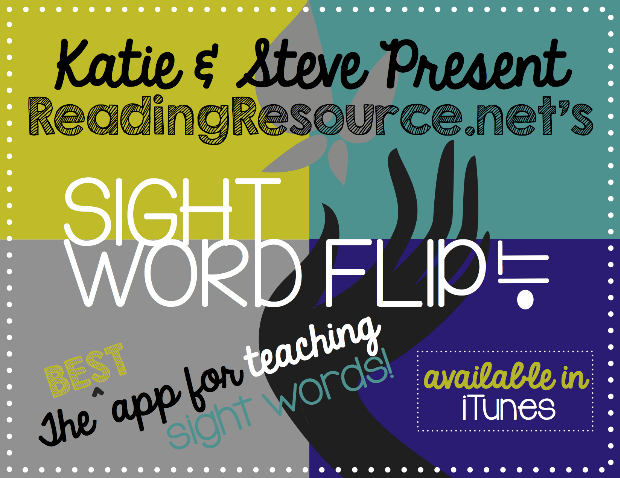
COPYRIGHT 2009 ALL RIGHTS RESERVED READINGRESOURCE.NET, LLC

Repeated reading
Home » Fluency » Evidence-based fluency instruction » Repeated reading
Repeated Reading – when done properly – is an effective, evidence-based approach to fluency instruction. Repeated Reading in various forms has been studied extensively (see Padeliadu & Giatzidou, 2018 , for a review of eight meta-analyses).
Several important characteristics of a Repeated Reading lesson must be present in order for it to be optimally effective.
- Modelling of fluent reading
- Positive feedback and correction from adults
- Goal setting, reinforcement, and self-monitoring
- Previewing potentially unknown words before reading
- Cueing students to focus on pace and meaning as they read
- At least four repetitions of the same text (standard Repeated Reading) or a sufficiently similar text (‘Varied Practice’)
Some methods of reading fluency instruction involve the use of a timer — having students read as many words as they can within a designated time period (usually one or two minutes). Sometimes it is the reverse — timing how long it takes for a student to read a list of words or a passage. When a timer is used, the student should be advised that speed is not the only thing to focus on in their reading – they need to be accurate and observe the rules of punctuation and other conventions.
How to do Repeated Reading
This activity can be done with a whole class, small group or one-to-one.
- Choose a passage that students can read with very few errors.
- The passage should be readable in 1-2 minutes (50-200 words).
- Model fluent reading of the passage.
- Listen to the student/s read the passage and provide unknown words after three seconds.
- Provide specific positive or corrective feedback to the student/s after each reading, mentioning accuracy, rate or expression.
- Have the student/s read the passage at least four times.
- Plan for 10 to 15 minutes per fluency lesson, ideally three times a week.

Example of Repeated Reading with one student
Stay up to date with all the latest from Five from Five

Five from Five
MultiLit acknowledges the traditional owners as the original custodians of this land. We pay our respects to their elders, past and present, and extend that respect to all Aboriginal and Torres Strait Islander peoples.

- Level 7, Building C, 11 Talavera Road, Macquarie Park NSW 2113
- +61 2 9886 6600
- multilit.com
Want to drop us a line? You can get in touch by filling out the form below and we’ll get back to you as soon as possible!

A new, streamlined version of Intervention Central is coming in December 2023. The new site will eliminate user login accounts. If you have a login account, be sure to download and save any documents of importance from that account, as they will be erased when the website is revised.
- Academic Interventions
- Behavior Interventions
- CBM/Downloads
Repeated Reading
- Reading Fluency
The student reads through a passage repeatedly, silently or aloud, and receives help with reading errors.
- Reading book
- Stop watch (if readings are to be timed)
Preparation:
- The teacher, parent, adult tutor, or peer tutor working with the student should be trained in advance to use the listening passage preview approach.
Steps in Implementing This Intervention:
Step 1: Sit with the student in a quiet location without too many distractions. Position the book selected for the reading session so that both you and the student can easily follow the text.
Step 2: Select a passage in the book of about 100 to 200 words in length.
Step 3: Have the student read the passage through. (Unless you have a preference, the student should be offered the choice of reading the passage aloud or silently.)
Step 4: If the student is reading aloud and misreads a word or hesitates for longer than 5 seconds, read the word aloud and have the student repeat the word correctly before continuing through the passage. If the student asks for help with any word, read the word aloud. If the student requests a word definition, give the definition.
Step 5: When the student has completed the passage, have him or her read the passage again. You can choose to have the student read the passage repeatedly until either the student has read the passage a total of 4 times (Rashotte & Torgesen, 1985) or the student reads the passage at the rate of at least 85 to 100 words per minute (Dowhower, 1987; Herman, 1985).
- Dowhower, S.L. (1987). Effects of repeated reading on second-grade transitional readers' fluency and comprehension. Reading Research Quarterly, 22, 389-406.
- Herman, P.A. (1985). The effects of repeated readings on reading rate, speech pauses, and word recognition accuracy. Reading Research Quarterly, 20, 553-565.
- Rashotte, C.A. & Torgesen, J.K. (1985). Repeated reading and reading fluency in learning disabled children. Reading Research Quarterly, 20, 180-188.
- Rasinski, T.V. (1990). Effects of repeated reading and listening-while-reading on reading fluency. Journal of Educational Research, 83(3), 147-150.
Jim's Hints
Take Steps to Keep the Student Invested in the Activity . Repeated reading is effective as an intervention to build student reading fluency because it gives the student lots of reading practice. However, this activity could become dull and uninteresting for the student over time. If you find that the student is beginning to lose interest in repeated reading, consider:
- Providing praise to the student in specific terms for good reading.
- Allowing the student to pick out high-interest books or articles to use for repeated reading.
- Using a stop-watch, monitor the student's reading rate during each repeated reading and chart the results on a graph.
Re-reading is inefficient. Here are 8 tips for studying smarter.
by Joseph Stromberg
If you buy something from a Vox link, Vox Media may earn a commission. See our ethics statement.
The way most students study makes no sense.
That's the conclusion of Washington University in St. Louis psychologists Henry Roediger and Mark McDaniel — who've spent a combined 80 years studying learning and memory, and recently distilled their findings with novelist Peter Brown in the book Make It Stick: The Science of Successful Learning .
using active learning strategies is most effective
The majority of students study by re-reading notes and textbooks — but the psychologists' research, both in lab experiments and of actual students in classes, shows this is a terrible way to learn material. Using active learning strategies — like flashcards, diagramming, and quizzing yourself — is much more effective, as is spacing out studying over time and mixing different topics together.
McDaniel spoke with me about the eight key tips he'd share with students and teachers from his body of research.
1) Don't just re-read your notes and readings

Photofusion/UIG via Getty Images
"We know from surveys that a majority of students, when they study, they typically re-read assignments and notes. Most students say this is their number one go-to strategy.
when students re-read a textbook chapter, they show no improvement in learning
"We know, however, from a lot of research, that this kind of repetitive recycling of information is not an especially good way to learn or create more permanent memories. Our studies of Washington University students, for instance, show that when they re-read a textbook chapter, they have absolutely no improvement in learning over those who just read it once.
"On your first reading of something, you extract a lot of understanding. But when you do the second reading, you read with a sense of 'I know this, I know this.' So basically, you're not processing it deeply, or picking more out of it. Often, the re-reading is cursory — and it's insidious, because this gives you the illusion that you know the material very well, when in fact there are gaps."
2) Ask yourself lots of questions

Aram Boghosian for The Boston Globe via Getty Images
"One good technique to use instead is to read once, then quiz yourself, either using questions at the back of a textbook chapter, or making up your own questions. Retrieving that information is what actually produces more robust learning and memory.
retrieving information is what produces more robust learning and memory
"And even when you can't retrieve it — when you get the questions wrong — it gives you an accurate diagnostic on what you don't know, and this tells you what you should go back and study. This helps guide your studying more effectively.
"Asking questions also helps you understand more deeply. Say you're learning about world history, and how ancient Rome and Greece were trading partners. Stop and ask yourself why they became trading partners. Why did they become shipbuilders, and learn to navigate the seas? It doesn't always have to be why — you can ask how, or what.
"In asking these questions, you're trying to explain, and in doing this, you create a better understanding, which leads to better memory and learning. So instead of just reading and skimming, stop and ask yourself things to make yourself understand the material."
3) Connect new information to something you already know
"Another strategy is, during a second reading, to try relating the principles in the text to something you already know about. Relate new information to prior information for better learning.
"One example is if you were learning about how the neuron transmits electricity. One of the things we know if that if you have a fatty sheath surround the neuron, called a myelin sheath , it helps the neuron transmit electricity more quickly.
"So you could liken this, say, to water running through a hose. The water runs quickly through it, but if you puncture the hose, it's going to leak, and you won't get the same flow. And that's essentially what happens when we age — the myelin sheaths break down, and transmissions become slower."

( Quasar/Wikimedia Commons )
4) Draw out the information in a visual form
"A great strategy is making diagrams, or visual models, or flowcharts. In a beginning psychology course, you could diagram the flow of classical conditioning . Sure, you can read about classical conditioning, but to truly understand it and be able to write down and describe the different aspects of it on a test later on — condition, stimulus, and so on — it's a good idea to see if you can put it in a flowchart.
"Anything that creates active learning — generating understanding on your own — is very effective in retention. It basically means the learner needs to become more involved and more engaged, and less passive."
5) Use flashcards

"Flashcards are another good way of doing this. And one key to using them is actually re-testing yourself on the ones you got right.
keeping a correct card in the deck and encountering it again is more useful
"A lot of students will answer the question on a flashcard, and take it out of the deck if they get it right. But it turns out this isn't a good idea — repeating the act of memory retrieval is important. Studies show that keeping the correct item in the deck and encountering it again is useful. You might want to practice the incorrect items a little more, but repeated exposure to the ones you get right is important too.
"It's not that repetition as a whole is bad. It's that mindless repetition is bad."
6) Don't cram — space out your studying

Johannes Simon/Getty Images
"A lot of students cram — they wait until the last minute, then in one evening, they repeat the information again and again. But research shows this isn't good for long term memory. It may allow you to do okay on that test the next day, but then on the final, you won't retain as much information, and then the next year, when you need the information for the next level course, it won't be there.
practice a little bit one day, then two days later
"This often happens in statistics. Students come back for the next year, and it seems like they've forgotten everything, because they crammed for their tests.
"The better idea is to space repetition. Practice a little bit one day, then put your flashcards away, then take them out the next day, then two days later. Study after study shows that spacing is really important."
7) Teachers should space out and mix up their lessons too

Andy Cross/The Denver Post via Getty Images
"Our book also has information for teachers. And our educational system tends to promote massed presentation of information as well.
"In a typical college course, you cover one topic one day, then on the second day, another topic, then on the third day, another topic. This is massed presentation. You never go back and recycle or reconsider the material.
"But the key, for teachers, is to put the material back in front of a student days or weeks later. There are several ways they can do this. Here at Washington University, there are some instructors who give weekly quizzes, and used to just put material from that week's classes on the quiz. Now, they're bringing back more material from two to three weeks ago. One psychology lecturer explicitly takes time, during each lecture, to bring back material from days or weeks beforehand.
the key, for teachers, is to put the material back in front of a student days or weeks later
"This can be done in homework too. It's typical, in statistics courses, to give homework in which all of the problems are all in the same category. After correlations are taught, a student's homework, say, is problem after problem on correlation. Then the next week, T tests are taught, and all the problems are on T tests. But we've found that sprinkling in questions on stuff that was covered two or three weeks ago is really good for retention.
"And this can be built into the content of lessons themselves. Let's say you're taking an art history class. When I took it, I learned about Gauguin, then I saw lots of his paintings, then I moved on to Matisse, and saw lots of paintings by him. Students and instructors both think that this is a good way of learning the painting styles of these different artists.
"But experimental studies show that's not the case at all. It's better to give students an example of one artist, then move to another, then another, then recycle back around. That interspersing, or mixing, produces much better learning that can be transferred to paintings you haven't seen — letting students accurately identify the creators of paintings, say, on a test.
"And this works for all sorts of problems. Let's go back to statistics. In upper level classes, and the real world, you're not going to be told what sort of statistical problem you're encountering — you're going to have to figure out the method you need to use. And you can't learn how to do that unless you have experience dealing with a mix of different types of problems, and diagnosing which requires which type of approach."
8) There's no such thing as a "math person"

Christopher Furlong/Getty Images
"There's some really interesting work by Carol Dweck , at Stanford. She's shown that students tend to have one of two mindsets about learning.
it turns out that mindsets predict how well students end up doing
"One is a fixed learning model. It says, 'I have a certain amount of talent for this topic — say, chemistry or physics — and I'll do well until I hit that limit. Past that, it's too hard for me, and I'm not going to do well.' The other mindset is a growth mindset. It says that learning involves using effective strategies, putting aside time to do the work, and engaging in the process, all of which help you gradually increase your capacity for a topic.
"It turns out that the mindsets predict how well students end up doing. Students with growth mindsets tend to stick with it, tend to persevere in the face of difficulty, and tend to be successful in challenging classes. Students with the fixed mindset tend not to.
"So for teachers, the lesson is that if you can talk to students and suggest that a growth mindset really is the more accurate model — and it is — then students tend to be more open to trying new strategies, and sticking with the course, and working in ways that are going to promote learning. Ability, intelligence, and learning have to do with how you approach it — working smarter, we like to say."
This interview has been edited for length and clarity.
WATCH: '10 things they don't talk about at graduation'
Most Popular
10 big things we think will happen in the next 10 years, this changed everything, take a mental break with the newest vox crossword, how the self-care industry made us so lonely, israel is not fighting for its survival, today, explained.
Understand the world with a daily explainer plus the most compelling stories of the day.
More in Education

The NCAA’s proposal to pay college athletes is fair. That's the problem.

Why school segregation is getting worse

Make “free speech” a progressive rallying cry again

Here’s what sociologists want you to know about teen suicide

What does divesting from Israel really mean?


What the backlash to student protests over Gaza is really about

Why North Korea dumped trash on South Korea

8 surprising reasons to stop hating cicadas and start worshipping them

Is a ceasefire in Gaza actually close?

You can help reverse the overdose epidemic Video

What to know about Claudia Sheinbaum, Mexico’s next president

Repeated Reading
There are many valuable strategies to help students increase fluency. With Repeated Readings, students are not only reading on a regular basis but increasing their confidence which in turn will increase motivation.
Here are a few suggestions with Repeated Readings
- On Monday, have a student do a one-minute “cold read” with a new passage. Record the Oral Reading Fluency (ORF) score on a graph or the Repeated Reading Chart (found in the IMSE 30 Hour Comprehensive Training Manual Masters).
- Students should practice reading this same passage each day and record their ORF. This can be done in pairs to increase the number of times a student views the passage.
- You can also send this home as a homework idea. It only takes one minute to read it to a parent and record the progress!
- On Friday, do a final reading to see if the student can “beat” their Monday score. Record their progress on the chart.
- Repeat with a new passage for the following week. Use IMSE Decodable Readers or IMSE Student Reading Practice Books for repeated readings
With Repeated Readings, students are reading on a regular basis and will see that they can increase their reading fluency with each reading. Seeing this visual on a chart will raise their self-esteem and boost their motivation to read!
Powered By EazyDocs

- Career Center
- Digital Events
- Member Benefits
- Membership Types
- My Account & Profile
- Chapters & Affiliates
- Awards & Recognition
- Write or Review for ILA
- Volunteer & Lead
- Children's Rights to Read
- Position Statements
- Literacy Glossary
- Literacy Today Magazine
- Literacy Now Blog
- Resource Collections
- Resources by Topic
- School-Based Solutions
- ILA Digital Events
- In-Person Events
- Our Mission
- Our Leadership
- Press & Media

Literacy Now
- ILA Network
- Conferences & Events
- Literacy Leadership
- Teaching With Tech
- Purposeful Tech
- Book Reviews
- 5 Questions With...
- Anita's Picks
- Check It Out
- Teaching Tips
- In Other Words
- Putting Books to Work
- Tales Out of School

- Student Engagement & Motivation
- ~14 years old (Grade 9)
- ~11 years old (Grade 6)
- ~12 years old (Grade 7)
- Student Level
- Teaching Strategies
- Content Areas
- ~13 years old (Grade 8)
- Content Types
- Foundational Skills
- ~15 years old (Grade 10)
- English Language Arts
- The Engaging Classroom
Need More Instructional Time? Let Your Students Read at Home

As an eighth-grade English language arts teacher with 45-minute periods, my time with students has always seemed far too short. When my district switched to 90-minute blocks for language arts classes a few years ago, I thought I would finally have the time I needed to teach and ensure my students completed their work. However, after a lot of reflection and discussions with colleagues, I realized my long-standing practice of not assigning much reading homework was undermining my instructional time—even with the longer block.
When we moved to the longer blocks, along with a switch to a new language arts curriculum, it seemed logical to have students do the reading assignments in class. It’s a common practice, and it made sense because the text complexity of the new program was a big change for my students. But the result wasn’t what I expected. My pacing suffered terribly.
Let them do at home what they can handle on their own
Good reading instruction encourages students to revisit a text for multiple purposes, and I was doing that. But having students read the text first during class and then also do a deep analysis of the reading material in class was repetitive and, frankly, a little boring.
My colleagues and I realized we needed to assign the reading material as homework to improve our pacing and convey high expectations. Our eighth-grade students were capable of wrestling with the text independently for a first read. They could wonder about a text while doing homework, and then, as a class, we could all move to deeper levels of understanding through a variety of classroom activities.
For example, one of the core texts we read is All Quiet on the Western Front , and the homework for one lesson includes reading a dozen pages while annotating for emotional responses (or lack thereof) of the men in the Second Company. In class, students share what they find and then purposefully reread the text to answer additional text-dependent questions. That rereading promotes deeper learning and ensures all students are accessing the text, even if they missed the homework.
When first reading a book or other text on their own, I ask students to jot down what they notice and wonder, which serves as an entry point for our lesson in class. This supports them in reading longer, more complex materials with greater comprehension.
It’s important to help students, especially middle school students, become more self-directed and take ownership of their work. That will help them as they move up into high school and college. By asking students to complete more work outside of class, I’m supporting my students, not letting them down.
This approach makes especially good sense with reading, which doesn’t involve lab supplies or computer programs—just a quiet corner and a book, which they hopefully can find at home.
Four strategies to support and motivate students with reading homework
Making the shift to assigning reading at home rather than in class can be challenging, but it is worth the effort. Good reading instruction gives students multiple opportunities to engage with the content, so if a student doesn’t complete the homework, they will still have a chance to engage with the text. Over time, students will be more intrinsically motivated to complete the homework so that they can engage with their peers during class. Here are some strategies to try:
- Assign homework, especially reading homework, that is closely tied to what students are doing in class.
- Ask students, through homework prompts, to engage with reading by noticing and wondering about it. In class, use practices to encourage even deeper levels of analysis with your support and peer support.
- Give parents an entry point for discussions with their kids by providing a question related to the reading homework. Send the question through email or posted in a virtual space.
- Use tools like Equity Sticks to randomize student selection during class discussion. Write the names of your students and place them in a jar. During class, select a stick from the jar to check for understanding, ask for reflections, and have that student share thoughts on a reading. Making the process random removes any teacher bias, but you should also ensure your students know that they can pass at any time free of consequence or scrutiny.
I know homework seems out of date in some teaching circles. Kids are busy, and they need downtime, not busy work. But giving students rich reading assignments to engage with from home is hardly busy work. Rather, it’s an instructional approach that can help improve their literacy skills and free up time during the school day for more robust teaching and learning. I’ve found it’s hard to argue with that.
Krystle Gleason , an educator with 16 years of experience, has taught both high school English and eighth-grade language arts. She currently is an eighth-grade teacher at Mad River Local Schools in Dayton, OH. She also works part time as a PD facilitator for Great Minds, the developer of the Wit & Wisdom English language arts curriculum. She is passionate about helping each of her students reach their potential.
They Tried to Ban My Book
Challenged Books Can Hold Great Insight
- Conferences & Events
- Anita's Picks
Recent Posts
- Dana A. Robertson Named Vice President of ILA Board of Directors
- Guiding Writers: Engaging Scaffolds and “Cool Tools” for Results!
- Going Beyond Appreciation This Teacher Appreciation Week: Celebrating Empathy, Gratitude, and Inspiration
- The Double Helix of Reading and Writing: Fostering Integrated Literacy
- Uplifting Student Voices: Reflections on the AERA/ILA Writing Project

- For Network Leaders
- For Advertisers
- Privacy & Security
- Terms of Use

Spiral Review
All products.
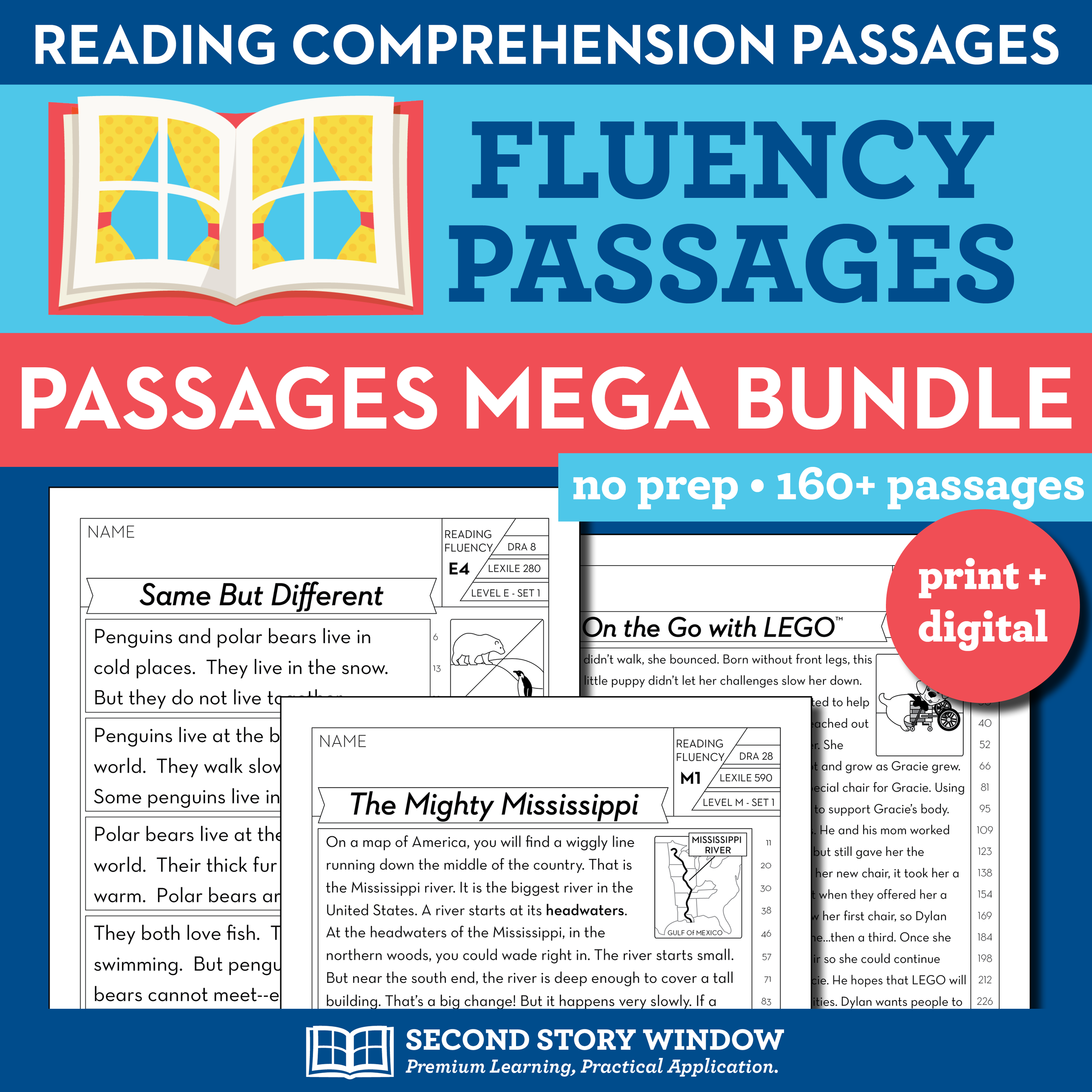
Repeated Reading Fluency Practice Leveled Reading Comprehension Passages & Questions
$ 152.00 Original price was: $152.00. $ 89.00 Current price is: $89.00.
This is a MEGA bundle of all our Reading Fluency Homework. These reading fluency passages are designed to be practiced 4 times and include close reading style reading comprehension questions. This mega bundle includes all our reading fluency sets from Level A – Level S. 160+ passages and over 500 pages.
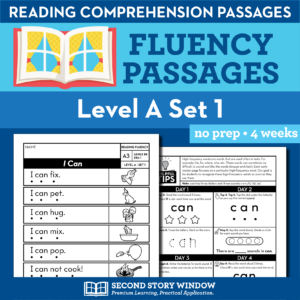
You have reached the maximum downloads for the monthly plan.
** You can upgrade to the yearly plan here! **
Are you looking for differentiated repeated reading fluency practice for your students? This is a MEGA bundle of all our Reading Fluency and Comprehension Passages with Questions. With 168 leveled passages, these engaging passages will improve your students’ reading fluency throughout the entire year. Plus, the different levels will help each student in your class become a strong reader, no matter their level.
These repeated reading fluency passages take only a few minutes a day to complete and have built-in reading comprehension practice. Each week students read a reading comprehension passage daily to build their fluency skills with repeated readings. This mega bundle includes all our reading fluency sets from Level A – Level S. These short reading passages will help you set up effective interventions or consistent homework that will help you with your fluency instruction.
This MEGA bundle includes all the repeated reading fluency practice sets from:
⭐️ Kindergarten Fluency Bundle (passages only – no pre-reading fluency sets)
⭐️ First Grade Fluency Bundle
⭐️ Second Grade Fluency Bundle
⭐️ Third Grade Fluency Bundle
⭐️ Fourth Grade Fluency Bundle
⭐️ Seasonal fluency sets (not currently included in any other bundles)
⭐️ AND other bonus sets not currently included in other bundles
⭐️ AND any future fluency sets we create!
*** This mega bundle will also grow to include any future levels or sets as we add them- for free! If more is added, the price will grow. The sooner you buy, the more you save!
Bonus file teacher resources include:
✅ Homework trackers
✅ Parent letters in English and Spanish
✅ Fluency growth chart tracking sheets
✅ Fluency folder covers
❤️ Your students will LOVE using these reading fluency practice passages as they can see their growth and improvement as the weeks go on. Each week they will read the new passage a specific number of times. As the week progresses, they will be able to demonstrate a fluent reading of the passage.
❤️ You will LOVE these leveled passages because they provide you with quality reading intervention materials that can be used daily to support your students and their reading needs. Your students can read the short passage in small groups on in a 1 on 1 reading session. Be sure to complete this repeated reading intervention in a quiet location. Alternatively, these leveled passages can be sent home as homework for struggling readers.
Setting up these reading fluency and comprehension passages is EASY!
✅ Print the reading fluency passages you need for the week and copy them back-to-back.
✅ Students work on one reading comprehension passage per week at home.
✅ Each page is divided into 4 sections and labeled Day 1, Day 2, Day 3, Day 4 – so simple!
Each weekly reading comprehension passage includes:
- 2 pages (copy double-sided)
- 1 leveled fluency passage for daily reading (alternating fiction and non-fiction)
- 4 days of short close reading activities or sight word practice (levels a-d)
- alternate question page each week with multiple choice close reading questions + key
- NEW: Now includes digital versions for Google Slides (annotation + open ended questions) and for Google Forms (multiple choice/short answer questions)
❤️ Your parents will LOVE these reading comprehension homework assignments because they run so smoothly and can be done in only a few minutes! There are also weekly tips to give families ideas of how to support their students at home as they build their fluency and reading comprehension skills. Your parents will be thrilled at how easy it is to set up a reading routine to support their young readers.
What are teachers saying about these reading fluency and comprehension passages?
⭐️⭐️⭐️⭐️⭐️ “ These have been a lifesaver! My school doesn’t have leveled books/stories, so I have used these during guided reading groups. There are so many different ways you can use this resource. Highly recommend!” – Amber H.
⭐️⭐️⭐️⭐️⭐️ “This was an excellent resource for differentiating reading fluency. In the beginning of the year, I tested my student’s reading fluency and placed them into 3 groups— above grade level, at grade level and below grade level. This resource was mainly used for reading fluency homework. I love how there are short reading comprehension questions at the back. Not only do my kids enjoy it, their parents are so happy to see improvement based on their reading fluency tracker. This product has been a win-win for all of us.” – Charlene C.
⭐️⭐️⭐️⭐️⭐️ “I use this as homework. I’ve found that my students grow right along with the levels. These are great for both reading fluency and comprehension. Out of everything I’ve purchased on TPT, these are my favorite and worth every penny !” – Olympia M.
Please note: this mega bundle does NOT include pre-reading fluency sets: letter name fluency, letter sound fluency, or segmenting and blending fluency.
Want more information about repeated readings?
- Check out: REPEATED READING FLUENCY STRATEGIES AND WHY YOUR STUDENTS NEED THEM
______________________________________________
You may also like…
- Science of Reading Beginning Reading Mega Bundle (letter name, letter sound, and segmenting and blending fluency)
- Vocabulary Activities Bundle
- Word Family Worksheets Mega Bundle
___________________________________
Copyright © Second Story Window
Permission to copy for single classroom use only.
Please purchase additional licenses if you intend to share this product.
You might also like...
Related products.

Autumn Fluency in a Flash 1st Grade • Digital Fluency Mini Lessons
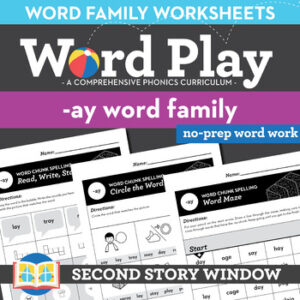
-Ay Word Family Worksheets No Prep Long Vowel A Chunk Spelling
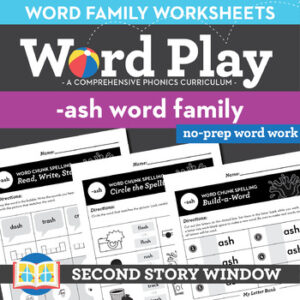
-Ash Word Family Worksheets No Prep Short Vowel A Chunk Spelling
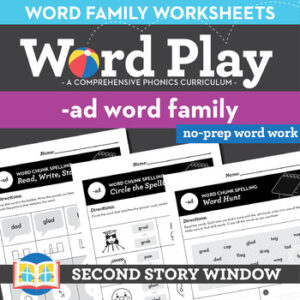
-Ad Word Family Worksheets No Prep Short Vowel A Chunk Spelling
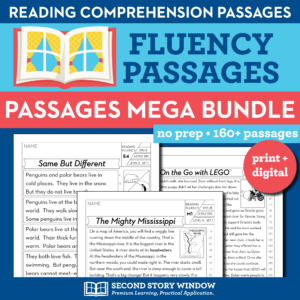
What can we help you with?
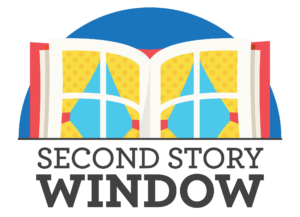
Stay in the Loop
Get the latest tips and updates straight to your inbox.

More results...
- PLD Website
- Online Courses
Share with a friend
How to use phonic dictation passages at home as decodable reading material.

Home practice of phonic concepts taught at school through the use of decodable reading material provides students with an opportunity to consolidate their learning and increase the amount of oral reading time provided. Students need multiple opportunities and extensive practice of reading in connected text to support autonomous word recognition (Kuhn et al., 2010).
What are Decodable Texts
Decodable texts are designed to consist of phonetically regular words using letter-sound correspondences previously taught (Cheatham & Allor, 2012). This makes decodable texts particularly beneficial for early readers in Foundation/Prep to Year 1 or older struggling readers, who are yet to master the most commonly found phonic concepts in English literature.
How to Facilitate Reading Fluency
While both repeated and continuous reading are effective strategies for improving reading fluency, expanding the variety and volume of texts read accelerates fluency development more than repeated reading alone (Kuhn et al., 2010). However, providing a sufficient range of decodable books can be challenging due to limited resource budgets. An effective solution is using PLD’s dictation passages as home reading materials.
PLD’s Phonic Dictation resources , focusing on specific phonic concepts, offer students numerous opportunities to practise. For example, a passage such as ‘Going Fishing’ targets the ‘sh’ letter-sound. Engaging students in repeating reading activities can be challenging. To address this, PLD has incorporated timed reading activities, which have proven effective in enhancing students’ engagement. In our experience, students often enjoy the challenge of beating their previous times. This method also encourages students who are slow at decoding words to increase their speed, gradually moving towards reading words fluently without needing to sound out each word (note that it is appropriate for Foundation/Prep students to decode most words when they are beginning to learn how to read, reading automaticity begins near the end of Foundation/Prep and in Year 1).
The Phonic Dictation resources can also be used as a way to provide continuous or varied reading opportunities as multiple different passages can be provided to students throughout the week. Additionally, the revised version of PLD’s Phonic Dictation passages now includes three different passage lengths, accommodating students who might find longer texts daunting.
How to Facilitate Spelling Transference into Writing and Proofreading Skills
Beyond reading, PLD’s Phonic Dictation also provides students with the opportunity to practise their writing and proof-reading skills. Instructions on timed reading, dictation, and editing misspelt passages are included and support the transference of single word spelling abilities into writing tasks.
Example of a Weekly Routine Utilising Phonic Dictation Passages
Monday: Read the allocated passage and time the reading (could be set for homework). Task 2: A simple comprehension task, in which students illustrate (and label) as many elements in the passage as is possible.
Tuesday: Read the allocated passage and time the reading (could be set for homework). Task 3: Copying and handwriting practice, by rewriting the passage.
Wednesday: Read the allocated passage and time the reading (could be set for homework). Task 4: Editing practise by identifying and correcting the errors within the passage.
Thursday: Read the allocated passage and time the reading (could be set for homework). Task 5: First attempt at the rewriting of the passage in the context of dictation.
Friday: Read the allocated passage with expression. Task 5: Second attempt at the rewriting of the passage in the context of dictation.
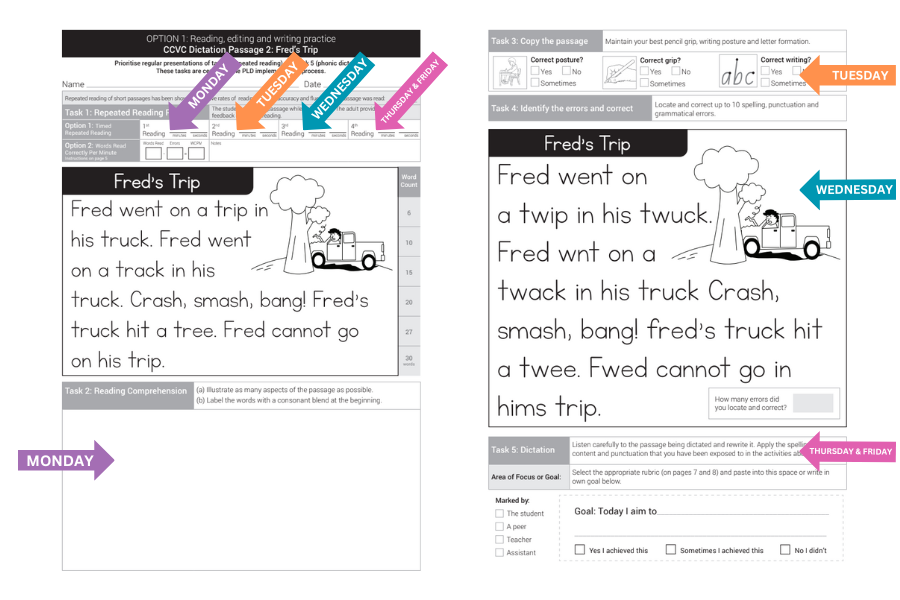
Examples of PLD Dictation Reading Material
We have phonic dictation tasks for all PLD stages. There are also companion videos you can watch for more details.
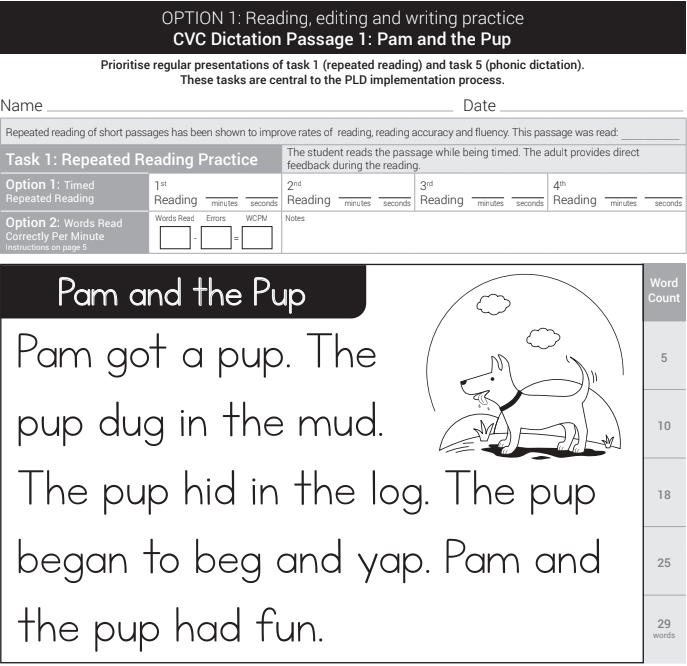
Digital Phonic Dictation Resources
Due to popular demand, the Phonic Dictation resources have been digitised! These eBooks contain between 42 and 74 phonic passages per stage. Find out more about our Phonic Dictation eBooks by clicking on the links below.
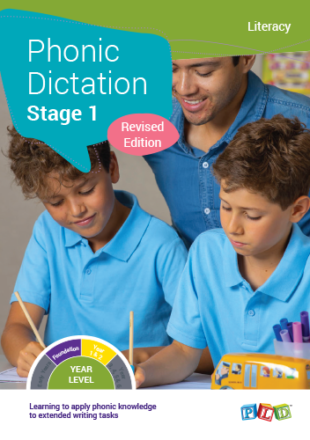
What Additional Materials are There to Support Home Reading
Alongside these dictation passages, we recommend decodable reading books for a broader range of reading practice. PLD offers a variety of home reading sets for beginning readers. Additionally, shared book reading using rich texts is vital for early readers as they do not have enough phonic knowledge to read these texts independently. PLD supports shared book reading through the use of comprehension question sheets for popular picture books, aiding in the development of advanced vocabulary, literal and figurative language, simple to complex comprehension questions, and narrative retelling skills. Parents can be provided with information sheets and videos explaining how to complete these activities here .
Additional Readings
- Why Decodable Reading Books Are Superior to Whole-Language Books When Learning to Read
- How Do Decodable Readers Function Within The PLD Process?
- Strategies to Improve Reading Fluencyhttps://pld-literacy.org/reading-fluency-continuous-reading-vs-repeated-reading/
Reference s
Cheatham, J. P., & Allor, J. H. (2012). The influence of decodability in early reading text on reading achievement: A review of the evidence. Reading & Writing , 25 (9), 2223-2246. https://doi.org/10.1007/s11145-011-9355-2
Kuhn, M. R., Schwanenflugel, P. J., & Meisinger, E. B. (2010). Aligning theory and assessment of reading fluency: Automaticity, prosody, and definitions of fluency. Reading Research Quarterly, 45(2), 230- 251
Privacy Overview
repeated reading graph
All Formats
Resource types, all resource types.
- Rating Count
- Price (Ascending)
- Price (Descending)
- Most Recent
Repeated reading graph
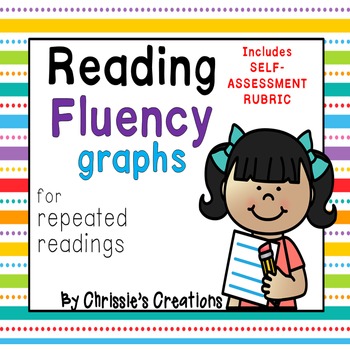
Fluency graph for repeated readings and self assessment fluency rubric
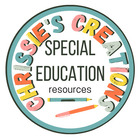
Fluency and Confidence Building Repeat Reading Bar Graph

Fluency Graphs for Repeated Reading

Repeated Reading Fluency Guide & Graph

Sight Word Practice | Graphing Activity | Reading or Math Center | Second Grade
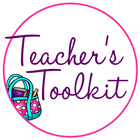
Fluency Progress Graphing Tool

SIPPS Extension Review Heart Words- Read it! Map it! Write it! Graph it!

Sight Word Practice | Graphing Activity | Math or Reading Center | Primer

Springtime Fluency Poems | Timed Reading | Choral Reading | Repeated Reading

Orthographic Mapping Mat: Tap It! Map It! Graph It! (Science of Reading Aligned)

Fluency Graphs for Students

SIPPS Beg. 1-20 Sight Words Read it, Map it, Write it, Graph it! Heart Words
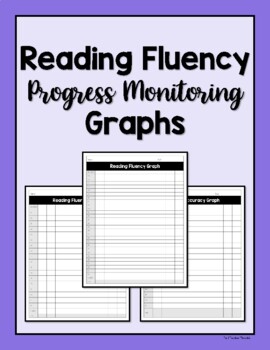
FREE Reading Fluency Progress Monitoring Graphs
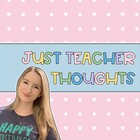
Fluency Graphs Bundle - 4 pack

Reading and Writing Fluency Norm Individual Recording Graphs

The Legend of Rock, Paper, Scissors | Math | Writing | Reading
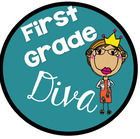
Winter Coordinate Graphing and Fraction Activity
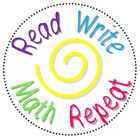
My Fluency Graph - starting at 60 wpm
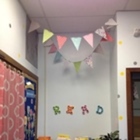
Dyslexia Screener Tracking Graph - Tracking At Risk Readers

Sight Word Practice | Graphing Activity | Math or Reading Center | Pre-Primer
Printable Reading Stamina Graph Tracker

Daily Fluency Chart (for repeated readings )

Electronic Reading Stamina Graph Tracker
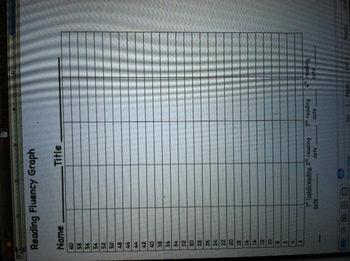
Reading Fluency Graph for First

- Word Document File
- We're hiring
- Help & FAQ
- Privacy policy
- Student privacy
- Terms of service
- Tell us what you think
Trump calls trial a ‘scam,’ vows to appeal historic guilty verdict
Former president Donald Trump, speaking at a rambling news conference Friday in New York, vowed to appeal his conviction on all counts in his hush money trial, calling it “a scam.” On Thursday, a New York jury found Trump guilty on 34 counts of falsifying business records to conceal a hush money payment to an adult-film actress. During Friday’s remarks, Trump renewed his attacks on the judge and prosecutor and aired other grievances about the process, making multiple false and misleading claims. He took no questions from reporters.
- Trump and his allies believe that criminal convictions will work in his favor
- Biden: It’s reckless and irresponsible to say Trump verdict was rigged
- House GOP wants Bragg to testify on Trump hush money prosecution
Here's what to know:
Here's what to know, live coverage contributors 32.

6:55 p.m. EDT 6:55 p.m. EDT
6:41 p.m. EDT 6:41 p.m. EDT
6:28 p.m. EDT 6:28 p.m. EDT
6:15 p.m. EDT 6:15 p.m. EDT
6:08 p.m. EDT 6:08 p.m. EDT

5:57 p.m. EDT 5:57 p.m. EDT
5:55 p.m. EDT 5:55 p.m. EDT
5:42 p.m. EDT Key update 5:42 p.m. EDT
5:15 p.m. EDT 5:15 p.m. EDT
4:48 p.m. EDT 4:48 p.m. EDT
4:31 p.m. EDT 4:31 p.m. EDT
4:04 p.m. EDT 4:04 p.m. EDT
3:31 p.m. EDT 3:31 p.m. EDT
3:09 p.m. EDT 3:09 p.m. EDT
2:59 p.m. EDT 2:59 p.m. EDT
2:50 p.m. EDT 2:50 p.m. EDT
2:20 p.m. EDT 2:20 p.m. EDT
1:58 p.m. EDT Key update 1:58 p.m. EDT
1:29 p.m. EDT 1:29 p.m. EDT
1:12 p.m. EDT 1:12 p.m. EDT
12:56 p.m. EDT 12:56 p.m. EDT
12:43 p.m. EDT 12:43 p.m. EDT
12:28 p.m. EDT Key update 12:28 p.m. EDT
12:10 p.m. EDT 12:10 p.m. EDT
11:59 a.m. EDT 11:59 a.m. EDT
11:45 a.m. EDT 11:45 a.m. EDT
11:38 a.m. EDT 11:38 a.m. EDT
11:25 a.m. EDT 11:25 a.m. EDT
11:24 a.m. EDT 11:24 a.m. EDT
11:20 a.m. EDT 11:20 a.m. EDT
11:05 a.m. EDT 11:05 a.m. EDT
10:52 a.m. EDT 10:52 a.m. EDT
10:37 a.m. EDT 10:37 a.m. EDT
10:25 a.m. EDT 10:25 a.m. EDT
10:12 a.m. EDT 10:12 a.m. EDT
10:00 a.m. EDT 10:00 a.m. EDT
9:50 a.m. EDT Key update 9:50 a.m. EDT
9:33 a.m. EDT Reporting from New York 9:33 a.m. EDT
9:26 a.m. EDT 9:26 a.m. EDT
9:15 a.m. EDT 9:15 a.m. EDT
8:59 a.m. EDT Key update 8:59 a.m. EDT
8:41 a.m. EDT 8:41 a.m. EDT
8:33 a.m. EDT 8:33 a.m. EDT
8:18 a.m. EDT 8:18 a.m. EDT
8:02 a.m. EDT Key update 8:02 a.m. EDT
7:45 a.m. EDT 7:45 a.m. EDT
7:29 a.m. EDT 7:29 a.m. EDT
7:19 a.m. EDT 7:19 a.m. EDT
7:01 a.m. EDT 7:01 a.m. EDT
6:45 a.m. EDT Key update 6:45 a.m. EDT
6:30 a.m. EDT Key update 6:30 a.m. EDT
6:15 a.m. EDT 6:15 a.m. EDT
6:00 a.m. EDT 6:00 a.m. EDT

- Skip to main content
- Keyboard shortcuts for audio player
Trump confronts repeated booing during Libertarian convention speech
Associated Press

Republican presidential candidate, former President Donald Trump speaks at the Libertarian National Convention at the Washington Hilton in Washington, Saturday, May 25, 2024. Jose Luis Magana/AP/Jose Luis Magana/AP hide caption
WASHINGTON — Donald Trump was booed repeatedly while addressing the Libertarian Party National Convention on Saturday night, with many in the crowd shouting insults and decrying him for things like his COVID-19 policies, running up towering federal deficits and lying about his political record.
When he took the stage, many jeered while some supporters clad in “Make America Great” hats and T-shirts cheered and chanted “USA! USA!” It was a rare moment of Trump coming face-to-face with open detractors, which is highly unusual for someone accustomed to staging rallies in front of ever-adoring crowds.
Libertarians, who prioritize small government and individual freedoms, are often skeptical of the former president, and his invitation to address the convention has divided the party. Trump tried to make light of that by referring to the four criminal indictments against him and joking, “If I wasn’t a Libertarian before, I sure as hell am a Libertarian now.”
Trump tried to praise “fierce champions of freedom in this room” and called President Joe Biden a “tyrant” and the “worst president in the history of the United States,” prompting some in the audience to scream back: “That’s you.”

Trump is a Republican. RFK is a Democrat. They're both wooing Libertarians
As the insults continued, Trump eventually hit back, saying “you don't want to win” and suggesting that some Libertarians want to “keep getting your 3% every four years.”
Libertarian candidate Gary Johnson won about 3% of the national vote in 2016, but nominee Jo Jorgensen got only a bit more than 1% during 2020’s close contest.
Libertarians will pick their White House nominee during their convention, which wraps on Sunday. Trump’s appearance also gave him a chance to court voters who might otherwise support independent presidential candidate Robert F. Kennedy, Jr. who gave his own Libertarian convention speech on Friday.
Polls have shown for months that most voters do not want a 2020 rematch between Trump and President Joe Biden. That dynamic could potentially boost support for an alternative like the Libertarian nominee or Kennedy, whose candidacy has allies of Biden and Trump concerned that he could be a spoiler.
Despite the raucous atmosphere, Trump continued to press on with his speech, saying he’d come “to extend a hand of friendship” in common opposition to Biden. That prompted a chant of “We want Trump!” from supporters, but more cries of “End the Fed!” — a common refrain from Libertarians who oppose the Federal Reserve. One person who held up a sign reading “No wannabe dictators!” was dragged away by security.
Trump tried to win over the crowd by pledging to include a Libertarian in his Cabinet, but many in the crowd hissed in disbelief. The former president did get a big cheer when he promised to commute the life sentence of the convicted founder of the drug-selling website Silk Road, Ross Ulbricht, and potentially release him on time served.
That was designed to energize Libertarian activists who believe government investigators overreached in building their case against Silk Road, and who generally oppose criminal drug policies more broadly. Ulbricht’s case was much-discussed during the Libertarian convention, and many of the hundreds in the crowd for Trump’s speech hoisted “Free Ross” signs and chanted the phrase as he spoke.
Despite those promises, many in the crowd remained antagonistic. One of the candidates vying for the Libertarian presidential nomination, Michael Rectenwald, declared from the stage before the former president arrived that “none of us are great fans of Donald Trump.” After his speech, Rectenwald and other Libertarian White House hopefuls took the stage to scoff at Trump and his speech.
Those for and against Trump even clashed over seating arrangements. About two hours before the former president's arrival, Libertarian organizers asked Trump supporters in the crowd to vacate the first four rows. They wanted convention delegates — many of whom said they’d traveled from around the country and bought expensive tickets to the proceedings — could sit close enough to hear the speech.
Many of the original seat occupants moved, but organizers eventually brought in more seats to calm things down.
The Libertarian split over Trump was reflected by Peter Goettler, president and chief executive of the libertarian Cato Institute, who suggested in a Washington Post column that the former president’s appearance violated the gathering’s core values and that “the political party pretending to be libertarian has transitioned to a different identity.”
Trump’s campaign noted that Biden didn't attend the Libertarian convention himself, and argued that the former president's doing so was part of an ongoing effort to reach would-be supporters in places that are not heavily Republican — including the former president’s rally Thursday in the Bronx during a pause in his New York hush money trial.
The Libertarian ticket will try to draw support from disaffected Republicans as well as people on the left. Such voters could also gravitate toward Kennedy.
Trump didn't dwell on Kennedy on Saturday night. But, after previously praising him and once considering him for a commission on vaccination safety, the former president has gone on the attack against Kennedy. He suggested on social media that a vote for Kennedy would be a “wasted protest vote” and that he would “even take Biden over Junior.”
The former president, while in office, referred to the COVID-19 vaccine as “one of the greatest miracles in the history of modern-day medicine.” He’s since accused Kennedy of being a “fake” opponent of vaccines.
In his speech at the Libertarian convention, Kennedy accused Trump and Biden of trampling on personal liberties in response to the pandemic. Trump bowed to pressure from public health officials and shut down businesses, Kennedy said, while Biden was wrong to mandate vaccines for millions of workers.
For his part, Biden has promoted winning the endorsement of many high-profile members of the Kennedy family, in an attempt to marginalize their relative’s candidacy.
Kevin Munoz, a spokesperson for Biden’s reelection campaign, slammed Trump and top Republicans for opposing access to abortion and supporting limits on civil society, saying in a statement Saturday, that “freedom isn’t free in Trump’s Republican Party and this weekend will be just one more reminder of that.”
- Donald Trump

COMMENTS
Samuel's idea of repeated reading was that it could help readers to gain automaticity. He thought it would help readers to master the art of reading words accurately and with sufficient speed . When children are learning to read, they initially struggle to read words accurately. That is very common in Grade 1.
Repeated reading is reading the same text multiple times until a certain (or better) level of fluency is reached. We've known since the 1970's that repeated reading improves fluency. It helps readers achieve automaticity - so that they can decode without thinking about decoding (Shanahan, 2017). in 1979, J. Samuels (one of the big names ...
Repeated Reading Homework Log. ... Using the same premise as mentioned on the Reading Fluency Page in "Repeated Readings", students can receive feedback and guidance reading appropriate text from their peers. One student plays the "reader" and the other is the "listener". The teacher sets a timer for a desired amount of time and after the first ...
Why Use Fluency Practice Passages. Fluency is a key foundational skill that helps students read complex text with greater understanding. When students read with accuracy and expression at an appropriate reading rate, their fluency supports their comprehension. Repeated reading practice with short passages improves word recognition and automaticity.
This video guides students to practice their reading fluency using the repeated reading strategy. A high interest poem, "My Dog Does My Homework" by Kenn Ne...
Repeated reading has been identified as one of the most effective ways to improve reading fluency in students (Fisher, Frey and Hattie, 2017). It involves reading a section of text a number of times to provide students with the rehearsal required to build accuracy, speed and confidence. One way to do this, is to pair students in mixed abilities ...
Procedures for Repeated Reading with the following performance feedback: 1. Follow steps 1 and 2 (above). 2. Follow along with the text as the student reads aloud. 3. If the student takes longer than 5 seconds or misreads a word, correct the student by reading the word and then have the student repeat the word correctly.
Teachers use this reading strategy primarily to increase the fluency of their students. Repeated reading benefits students whose reading is accurate but choppy by helping them develop automaticity, or the ability to read quickly and accurately. With this automaticity comes increased comprehension and higher success in reading in general.
Repeated Reading in Pairs. The activity takes 10 to 15 minutes. Students can be grouped in pairs to read to each other. This pairing can be either informal or formal. The pairing can be with same-age or cross-age peers (Bergeron, 1998). Koskinen and Blum (1985) discussed a procedure for informal repeated readings in pairs.
Using Repeated Readings to Improve Fluency. Repeated reading is just what it sounds like- a student reading the same text multiple times . The number of times depends on the situation, but 3-4 times is a good average. During the reading session, the student is timed reading the chosen reading texts or section of text aloud for 1 minute.
Repeated Reading Homework Log. ... Here is another version of the repeated reading method commonly used: An adult chooses a passage that is slightly above the child's instructional level. The child reads the ENTIRE passage aloud (a using an excerpt around 100 words is desirable), while the adult times him or her using a stopwatch. ...
How to do Repeated Reading. This activity can be done with a whole class, small group or one-to-one. Choose a passage that students can read with very few errors. The passage should be readable in 1-2 minutes (50-200 words). Model fluent reading of the passage. Listen to the student/s read the passage and provide unknown words after three seconds.
Repeated reading and reading fluency in learning disabled children. Reading Research Quarterly, 20, 180-188. Rasinski, T.V. (1990). Effects of repeated reading and listening-while-reading on reading fluency. Journal of Educational Research, 83(3), 147-150. Jim's Hints. Take Steps to Keep the Student Invested in the Activity. Repeated reading is ...
1) Don't just re-read your notes and readings. "We know from surveys that a majority of students, when they study, they typically re-read assignments and notes. Most students say this is their ...
With Repeated Readings, students are not only reading on a regular basis but increasing their confidence which in turn will increase motivation. ... You can also send this home as a homework idea. It only takes one minute to read it to a parent and record the progress! On Friday, do a final reading to see if the student can "beat" their ...
Here are some strategies to try: Assign homework, especially reading homework, that is closely tied to what students are doing in class. Ask students, through homework prompts, to engage with reading by noticing and wondering about it. In class, use practices to encourage even deeper levels of analysis with your support and peer support.
These sight word worksheets are perfect for in class practice, independent centers, morning tubs, homework and distance lea. Subjects: English Language Arts ... Each pet in these stories has a different gender to practice. Language and grammar structures are being repeated while reading short and simple sentences. The rebus story and combined ...
Fluency practice is embedded in the Common Core. Repeated reading is a research based strategy to improve fluency, but the passages in the AIMSweb and Dibels programs are long, boring and not related to the curriculum. Students avoid practice because the stories are not engaging. This package contains information for the teacher on how to start a repeated reading program, a parent introductory ...
Students will gain fluency in reading the sight words and word patterns. This can be used as a homework activity and or a skill group activity to be used in independent work time. Subjects: English Language Arts, Reading. Grades: 1 st. ... Repeated reading is a research based strategy to improve fluency, but the passages in the AIMS web and ...
This is a MEGA bundle of all our Reading Fluency Homework. These reading fluency passages are designed to be practiced 4 times and include close reading style reading comprehension questions. This mega bundle includes all our reading fluency sets from Level A - Level S. 160+ passages and over 500 pages.
Monday: Read the allocated passage and time the reading (could be set for homework).Task 2: A simple comprehension task, in which students illustrate (and label) as many elements in the passage as is possible. Tuesday: Read the allocated passage and time the reading (could be set for homework).Task 3: Copying and handwriting practice, by rewriting the passage.
Trump also repeated his claim that the judge in the case, Juan Merchan, was "highly conflicted." There is no evidence of this. And he complained about the fact that he didn't testify in the ...
Tens of thousands have left for Thailand after Myanmar's military, facing repeated battlefield losses, announced it aimed to conscript 60,000 soldiers. By Rebecca Tan. June 3, 2024 at 2:00 a.m ...
On the weekly repeated reading graph, there is a section for teachers and students to write down strategies that were implemented and goals to increase fluency. ... These reading menus can serve as homework for your students all year long. The menus can be used with any book, story, passage, or article. Each night, students will read for 20 ...
1 min. Former president Donald Trump, speaking at a rambling news conference Friday in New York, vowed to appeal his conviction on all counts in his hush money trial, calling it "a scam.". On ...
Former President Donald Trump was loudly and consistently booed throughout his speech to the Libertarian convention, particularly when he asked attendees to "nominate me or at least vote for me."
One person who held up a sign reading "No wannabe dictators!" was dragged away by security. Trump tried to win over the crowd by pledging to include a Libertarian in his Cabinet, but many in ...